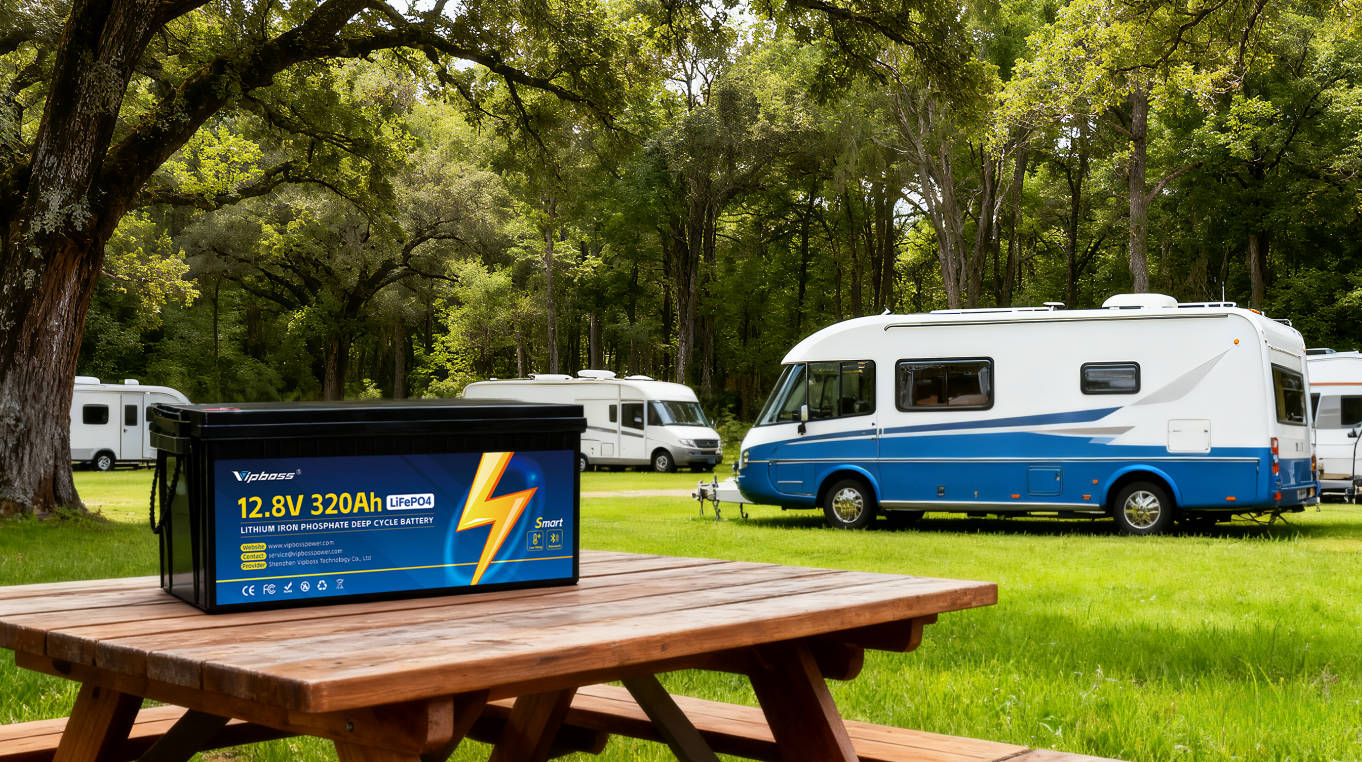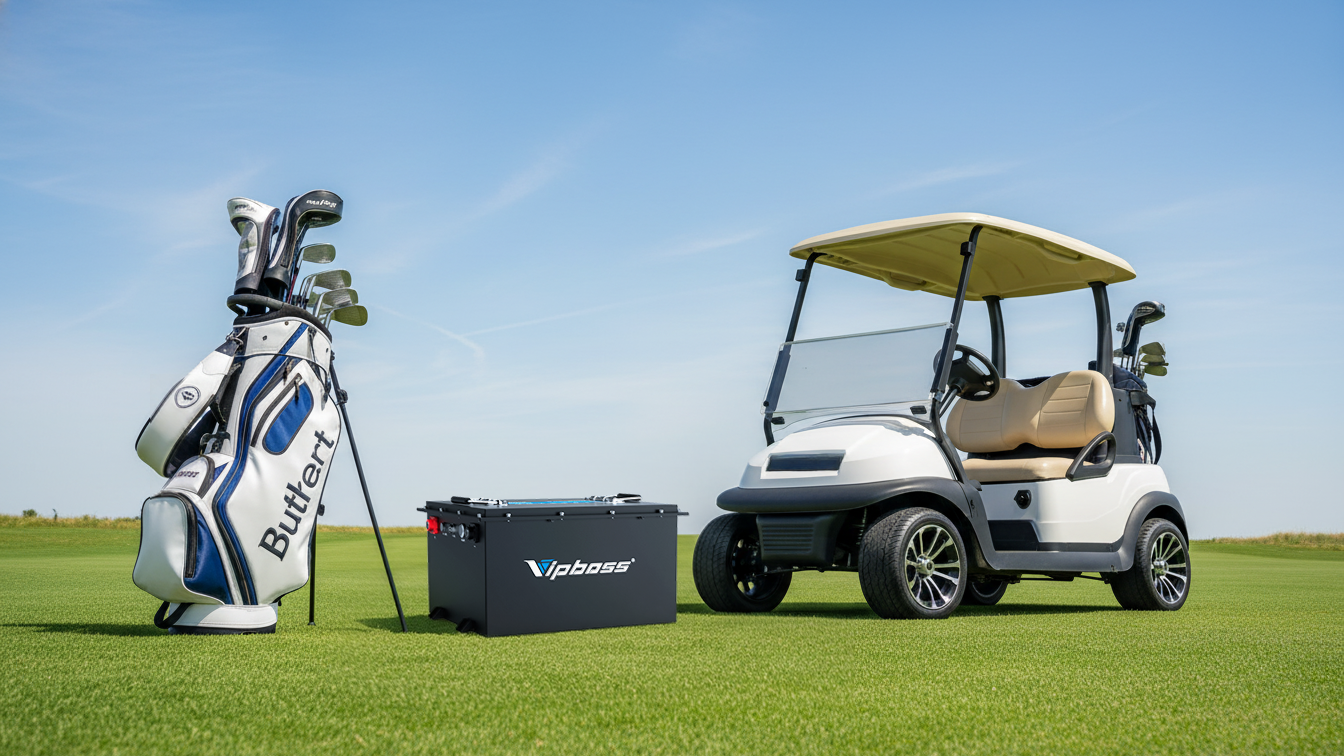Steep fairways, a rear seat full of passengers, and an extra loop before heading home can make a cart feel sluggish at the end of the day. Voltage sits at the center of that experience. Higher voltage delivers the same power with less current, so cables stay cooler and acceleration holds up on hills. A lithium battery strengthens the effect with a flatter voltage curve and less weight, which helps performance remain consistent across an entire outing. With those realities in mind, focus first on how 36V and 48V behave in everyday use, then size capacity and confirm compatibility.
What's the Real Difference Between 36 Volt and 48 Volt Golf Cart Batteries?
Your cart's feel comes from power, which equals voltage multiplied by current. At the same output, a 48V system uses less current than a 36V system. Lower current generally means less heat, reduced voltage sag during hard starts, and steadier climbing. Before diving into routes and loads, it helps to see the practical contrasts in one place.
| Factor | 36V System | 48V System |
| Traction Motor | Matched to 36V-rated motor | Matched to 48V-rated motor |
| Typical Platform | Older community carts, flat neighborhoods | Newer platforms, mixed or hilly routes |
| Acceleration Feel | Softer launches with heavier loads | Quicker response with passengers or cargo |
| Hill Climb | Adequate on mild grades | Stronger pull on sustained grades |
| Efficiency at Mixed Loads | Good when lightly loaded | Often better as terrain and load vary |
| Heat at Same Power | Higher current, warmer cables | Lower current, cooler operation |
| Voltage Sag Feel | Earlier sag on hard starts | Reduced sag, steadier feel |
| Wiring Stress | Higher current demands | Lower current for the same output |
| Late-Day Behavior | Noticeable fade near low state of charge | More consistent near low state of charge |
Two details matter across both voltages. First, the motor controller sets the limits for speed and current, so top speed depends on its programming. Second, big gains from 48V appear under load, on grades, and during repeated starts. Flat neighborhood loops with gentle cruising narrow the gap between 36-volt golf cart batteries and 48-volt golf cart batteries.
Which Voltage Fits Your Routes, Loads, and Range Goals for Golf Cart Batteries?
Choose voltage by mapping it to real days rather than spec sheets. Think about the ground you cover, who rides with you, how far a typical outing runs, and how often you recharge. Comfort with crisp launches or relaxed cruising also influences the best fit for golf cart batteries.
- Terrain and route length: Flat, short neighborhood loops place modest demands, so 36V can serve well. Longer routes with rolling grades favor 48V because the system handles power with less current, and performance stays consistent late in the day.
- Passengers and cargo: Two adults plus bags or a rear seat raise the current draw on starts and hills. A 48V setup trims sag and keeps speed steadier when the weight increases.
- Speed expectations: If you want brisk launches up to a community-limited speed, 48V usually feels more responsive. Casual cruising with gentle starts keeps 36V in play.
- Charging access and daily cadence: Frequent short trips with reliable overnight charging reduce the need for maximum voltage. Fewer, longer outings near the edge of the pack benefit from 48V efficiency as the state of charge drops.
If you plan to shift chemistry, a lithium battery pairs naturally with 48V because efficiency and late-day punch improve together. Most modern golf carts can accommodate lithium batteries with proper voltage matching and compatible charging systems.

How Does a Lithium Battery Change the 36V vs 48V Decision?
Chemistry changes feel. A lithium battery based on LiFePO4 holds voltage more consistently through discharge, so the cart keeps its punch late in a round instead of feeling tired as the gauge falls. The pack carries less weight than a comparable lead-acid set, which helps both acceleration and braking. Thermal behavior improves under load, especially on warm days or during back-to-back hill climbs.
Cycle life and maintenance also shift the math. A well-sized lithium pack often lasts longer in regular service and eliminates watering routines. Terminal corrosion is less common with proper installation. A modern battery management system enforces sensible continuous and peak discharge limits, so output stays predictable during hill starts with passengers aboard. These traits matter at both voltages, although the advantage becomes easier to feel on a 48V platform.
Right-Sizing Ah for 36V and 48V Golf Cart Batteries
Voltage sets the performance ceiling. Capacity in amp-hours sets how long you can use that performance. Compare packs in watt-hours: energy equals voltage multiplied by amp-hours. For example, a 48V 100Ah pack stores roughly the same energy as a 36V 133Ah pack. That equivalence helps you weigh options without guessing.
Use a simple three-step approach:
- Log a typical day. Note distance, stops, grades, and how many riders you carry. If no official consumption data exists, record a representative route and use it as your baseline, then add a buffer for hills, heat, and detours.
- Convert energy to capacity. Translate required watt-hours into Ah by dividing by the chosen pack voltage. This keeps sizing consistent across 36V and 48V options.
- Check permissible depth of discharge. A lithium battery can use a higher portion of its rated capacity while holding voltage, so a modest Ah rating may cover the same route that demanded a larger lead-acid set.
Two practical reminders make sizing more reliable. First, confirm the battery management system's continuous and peak discharge ratings so hill starts with passengers remain within limits. Second, remember that a lighter pack reduces the energy per mile, which is why some owners see longer range than the math alone suggests.
Chargers, Controllers, and Wiring: What Must You Upgrade for Lithium?
Compatibility matters as much as chemistry. At a minimum, match the lithium battery charger to both chemistry and voltage. A lithium-specific profile is required, and a 48V pack needs a 48V charger. Proper charging supports cycle life and keeps the protection system in its preferred window.
Review the rest of the system before installing 48-volt golf cart batteries or converting from 36V to 48V.
- Controller and solenoid ratings: Verify voltage and current ratings. A controller approved for 48V operation will list that capability. Moving a 36V cart to 48V typically calls for a controller update and an appropriate solenoid.
- Cables, lugs, and fuses: Lower current at 48V helps with heat, yet older cables can still run warm. Inspect gauge, insulation, and crimp quality. Replace worn lugs, apply the correct torque, and protect the main feed with a properly sized fuse.
- DC-DC converter and accessories: Lights, USB ports, and radios draw from a converter. Confirm the input range covers the new pack voltage and that outputs match accessory requirements. This avoids uneven loading across the battery string.
- Mounting and airflow: Lithium packs are smaller and lighter, which is convenient, although they still need secure mounting and reasonable airflow. Keep runs short, support heavy cables, and route wiring to avoid chafing.
Treat the conversion as a tidy project plan. List the charger, controller, solenoid, cables, fuses, and DC-DC converter as separate checks. Measure twice before placing orders.

Choosing the Right Voltage for Golf Cart Batteries
Anchor the decision in how you actually drive. Flat streets, light loads, and short loops can run happily on 36V when capacity is sized well. Mixed routes, regular hills, passengers, or a desire for sharper response shift the choice toward 48V, especially with a lithium battery that holds voltage deeper into the discharge window. Pick voltage first, size capacity second, and verify hardware last so every part fits on day one.
FAQs about Golf Cart Batteries
Q1: How do I size capacity for my route?
Capture a typical day: distance, stops, grades, payload, and temperature. Derive watt-hours from your log or a conservative baseline. Convert to amp-hours at 36V or 48V. Add a 20–30 percent margin for heat, aging, headwinds, elevation changes, and accessories demand.
Q2: Will 48V make my cart faster?
Top speed comes from the motor controller. A 48V platform lowers current and sag, so launches feel sharper and hills pull harder. For higher speed, confirm a 48V-rated controller, safe tires, adequate brakes, and compliance with neighborhood rules and stopping distances.
Q3: What must I replace when converting 36V to 48V with a lithium battery?
Install a 48V lithium charger and a 48V-rated controller and solenoid. Inspect cable gauge, lugs, and fuses. Verify DC-DC converter input range and accessory loads. Secure mounting, update labels, perform insulation checks, and document voltage, ripple, and thermal stabilization during commissioning.
Q4: How does a LiFePO4 lithium battery behave during discharge?
LiFePO4 holds voltage flatter across state of charge, so acceleration remains consistent late in the outing. Weight drops, heat rise slows, and a BMS enforces continuous and peak discharge limits while balancing cells and logging events for predictable output across seasons.
Q5: Any temperature considerations for lithium golf cart batteries?
Avoid charging below freezing unless the pack supports low-temperature charging. Expect reduced power in cold weather. Pre-warm when possible. Ensure airflow in summer. Store partially charged and within recommended temperature windows during operation, transport, and long-term storage to protect cycle life and safety.








Leave a comment
This site is protected by hCaptcha and the hCaptcha Privacy Policy and Terms of Service apply.